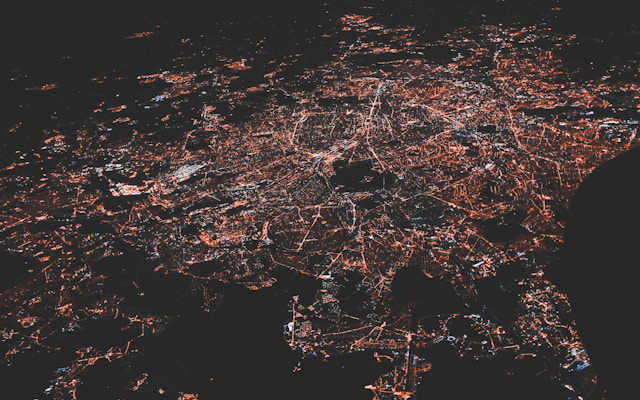Disclaimer: This post summarizes publicly available status-page and press report information as of publication. Root cause analysis (RCA) has not yet been published at the time of writing; therefore speculative explanations are avoided.
1. Human Context – Why This Felt Big
Early on November 18, 2025 (UTC morning, mid‑morning ET) users attempting to reach high‑traffic destinations such as X (formerly Twitter) and ChatGPT encountered challenge failures and generic connectivity / 5xx style errors. Even downtime tracking platform Downdetector briefly showed disruption, creating a recursive reliability moment: when the monitoring site is also impaired, user anxiety escalates.
The error string seen on some properties — “Please unblock challenges.cloudflare.com to proceed.” — pointed to issues in a Cloudflare component involved in challenge / security flows (likely associated with anti‑abuse or bot mitigation service paths). Cloudflare publicly stated it observed a “spike in unusual traffic” to one of its services beginning at approximately 06:20 AM ET (11:20 UTC), driving intermittent errors for traffic transiting its edge (Source: The Verge statement citing Cloudflare spokesperson; Cloudflare incident page timeline).
2. Verified Timeline (Consolidated)
Below is a synthesized timeline drawn strictly from the Cloudflare incident page and OpenAI status updates (timestamps UTC where possible) and The Verge reporting (time zones converted when referenced):
| Approx Time (UTC) | Event | Source |
|---|---|---|
| 11:20 UTC | Spike in unusual traffic begins impacting a Cloudflare service (statement referenced) | Verge report quoting Cloudflare spokesperson |
| 12:03–12:53 UTC | Cloudflare status page updates: investigation underway; internal service degradation noted | Cloudflare status incident page |
| 12:37 UTC | Partial recovery signals; elevated error rates persist | Cloudflare status |
| 13:09–13:13 UTC | Issue identified; fix implementation in progress; Access & WARP start recovering | Cloudflare status |
| 13:35–14:22 UTC | Continued remediation; iterative updates; working toward restoring remaining services | Cloudflare status |
| 14:29–15:08 UTC | OpenAI status shifts from investigation to identified third‑party provider issue (confirming dependency impact) | OpenAI status page |
| ~14:22 UTC onward | External sites (X, Downdetector, others) show improving accessibility | Observational / Verge follow‑up |
Note: Exact root cause (e.g., attack vector, configuration anomaly, cascading control-plane issue) is not yet confirmed publicly. Avoiding speculation ensures misinformation guidelines compliance.
3. Scope of Impact
Reported or observed affected services included:
- High‑traffic social / AI platforms: X, ChatGPT (OpenAI properties), other consumer web properties.
- Monitoring / aggregation: Downdetector (temporary impairment).
- Additional services cited (Verge list): NJ Transit, League of Legends, Grindr, Uber, Canva, Spotify, Archive of Our Own, Axios, The Information, Politico — illustrating breadth across verticals.
Nature of User-Facing Symptoms
- Challenge failures (“unblock challenges.cloudflare.com”) hinting at degraded behavior in a security gate (bot mitigation / challenge issuance layer) or related edge component.
- Elevated error rates (likely HTTP 500 / 5xx or connection drops) for a subset of requests.
- Intermittent recovery phases aligned with progressive mitigation.
4. Technical Interpretation (Non-Speculative Boundaries)
From available data we can reasonably, yet cautiously, outline contributing factors without overreaching:
- Edge Concentration: Large portions of global request paths depend on Cloudflare’s edge for DNS, CDN caching, TLS termination, WAF, bot management, and Zero Trust gateways. A failure mode in a control-plane or security pipeline can ripple broadly.
- Traffic Spike Effect: A sudden volume or pattern anomaly can trigger protective systems (rate limits, challenge escalations) which, if stressed or misclassified, may amplify error issuance rather than gracefully degrade.
- Dependency Chaining: OpenAI’s status page explicitly cites a third‑party provider (implicitly Cloudflare) confirming a transitive dependency exposing its availability.
We do not assert whether the spike was malicious (DDoS) or accidental (configuration / logic regression) — that awaits formal RCA.
5. Reliability & Resilience Lessons
Engineering and SRE teams can extract actionable insights:
a. Multi‑Layer Dependency Mapping
Treat CDN / edge vendors as critical infrastructure equal to cloud region dependencies. Maintain an updated dependency graph noting which user journeys require a specific edge feature (e.g., Bot Management, Zero Trust access) versus which can bypass it if degraded.
b. Graceful Challenge Failure Strategies
When challenge or anti‑abuse subsystems degrade, sites should possess a feature flag to fall back to a simpler static verification (e.g., cached JS token issuance, reduced bot heuristics) to keep human traffic flowing rather than hard-failing.
c. Multi‑CDN / Fallback Routing
Adopt active-active or hot-standby multi-CDN with DNS steering (weighted or latency-based). Key patterns:
- Keep TLS certs synchronized across edge providers.
- Use health probing independent of provider APIs (external synthetic checks).
- Avoid provider‑specific headers in origin logic where possible to ease switching.
d. Observability Outside the Affected Plane
Maintain separate vantage point monitors (RUM + synthetic) that do not transit the same degraded security path to reduce blind spots when a challenge layer misbehaves.
e. Communication Cadence
Mirror Cloudflare’s timestamped updates internally; propagate concise slack/incident channel messages: Status, Hypothesis Confidence, Next Action, ETA for Update. External trust improves when you align with provider status intervals.
f. Dependency Blast Radius Drills
Run quarterly failure injection: simulate partial CDN challenge failure, elevated 5xx, or WARP/Access degradation. Verify:
- Bypass toggles function.
- Error budget consumption metrics update correctly.
- Status page (your own) can still publish (avoid same provider coupling).
g. Third‑Party Service Abstraction
Encapsulate provider-specific logic (challenge verification, edge headers) behind internal interfaces enabling rapid re‑routing if vendor instability persists beyond threshold SLO minutes.
6. Security Considerations
A traffic spike could be benign or an attack precursor. Preparatory steps:
- Maintain adaptive DDoS runbooks: escalate from detection to scrubbing provider diversification.
- Keep anomaly classification telemetry (entropy of request paths, geographic concentration) stored for post‑incident forensics.
- Ensure security teams receive live mirroring of logs (out-of-band) even if primary dashboard/API experiences latency.
7. Business & Product Impact Framing
Business stakeholders ask: “How do we lower outage surface area?” Provide them with time-to-mitigation metrics:
- MTTD (Detection) vs user social media reports.
- MTTR (Recovery) relative to provider timeline (were we passive or did we enact fallbacks?).
- Percentage of critical user journeys preserved (e.g., read-only mode, cached content served) during provider error elevation.
8. Quick Recap
- A Cloudflare service degradation after an unusual traffic spike impacted major sites including X, ChatGPT, and monitoring resource Downdetector.
- Recovery was staged; Cloudflare progressively restored Access and WARP while mitigating errors.
- Root cause publicly unconfirmed at time of writing — avoid speculation.
- Core lessons: multi-CDN readiness, graceful challenge fallback, dependency mapping, and robust observability.
9. Action Checklist for Teams
- Inventory all Cloudflare-dependent request paths.
- Implement synthetic monitors outside challenge path.
- Create emergency feature flag: disable advanced bot logic → serve static fallback.
- Evaluate multi-CDN feasibility (cost vs resilience uplift).
- Formalize communications playbook with 15–30 min update SLA.
- Schedule a chaos drill simulating challenge platform latency/errors.
10. Frequently Asked Questions (Immediate User/Stakeholder Concerns)
Why did multiple unrelated sites fail simultaneously?
Many high‑traffic sites rely on Cloudflare for DNS resolution, TLS termination, caching, and security challenges. A degradation in a shared edge or security component produces correlated failures across otherwise independent brands.
Was this a DDoS attack?
Public statements only confirm a spike in unusual traffic. Without a published RCA, labeling it as a DDoS would be speculative. Teams should treat it as a reminder to review DDoS playbooks regardless.
Did data get breached?
No public source cited data exposure. The symptoms related to availability and error issuance, not confidentiality or integrity. Always await formal disclosure before asserting security impact.
Why did Downdetector briefly go down too?
Monitoring aggregators also depend on edge networks for delivery. When the network layer they rely on experiences elevated errors, their own uptime metrics and web UI can suffer, creating a visibility gap.
What can we do right now if our site was affected?
Audit logs for anomaly timing, enable simplified challenge or temporarily relax strict bot rules, confirm multi-region origin health, and communicate transparently with end users while awaiting provider RCA.
How soon should we expect a formal Cloudflare RCA?
Large providers usually publish detailed RCAs after internal validation—often within days for significant incidents. Monitor the official blog and status page; avoid circulating speculative internal drafts as fact.
Why did OpenAI cite a third-party provider?
It clarifies dependency-based causality: their service layer was healthy enough to detect that an upstream provider (edge network) caused errors, aligning with best practice transparency.
Does multi-CDN fully eliminate this risk?
It reduces single-provider blast radius but introduces complexity (cache coherence, routing policies). Properly engineered, it can significantly lower error correlation for edge-specific incidents.
Should we change our bot management settings after this?
Review for excessive coupling between challenge enforcement and availability. Ensure fallback logic exists so protective controls degrade gracefully instead of blocking legitimate traffic.
Is Zero Trust/WARP recovery relevant to typical websites?
Yes, because Access/WARP recovery indicates portions of Cloudflare’s Zero Trust stack stabilized earlier—useful for organizations whose internal workforce connectivity also relies on the same provider during public site incidents.
11. Source References
- The Verge coverage of the outage and Cloudflare spokesperson statement: A massive Cloudflare outage is affecting X, ChatGPT, and even Downdetector
- Cloudflare official incident timeline: Status Incident Page
- OpenAI confirmation of third‑party provider impact: OpenAI Status Incident
12. Internal Learning & Next Steps
Teams should schedule a 30‑minute retrospective within 72 hours focusing on detection latency and fallback execution. Defer architectural changes until formal RCA release to avoid churn based on incomplete evidence.
If Cloudflare publishes a root cause update, this article should be reviewed and lastmod updated only if substantive changes are made.



